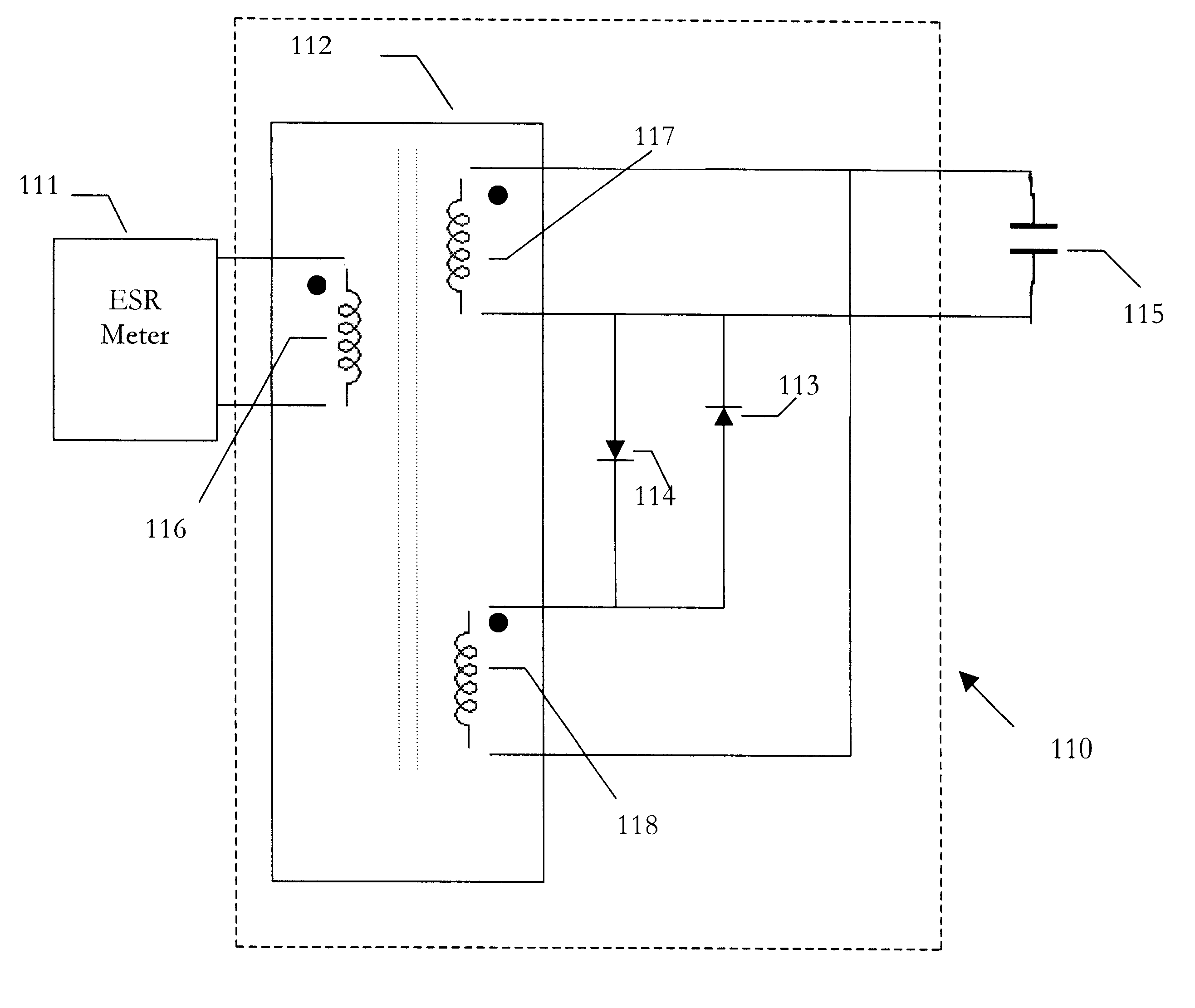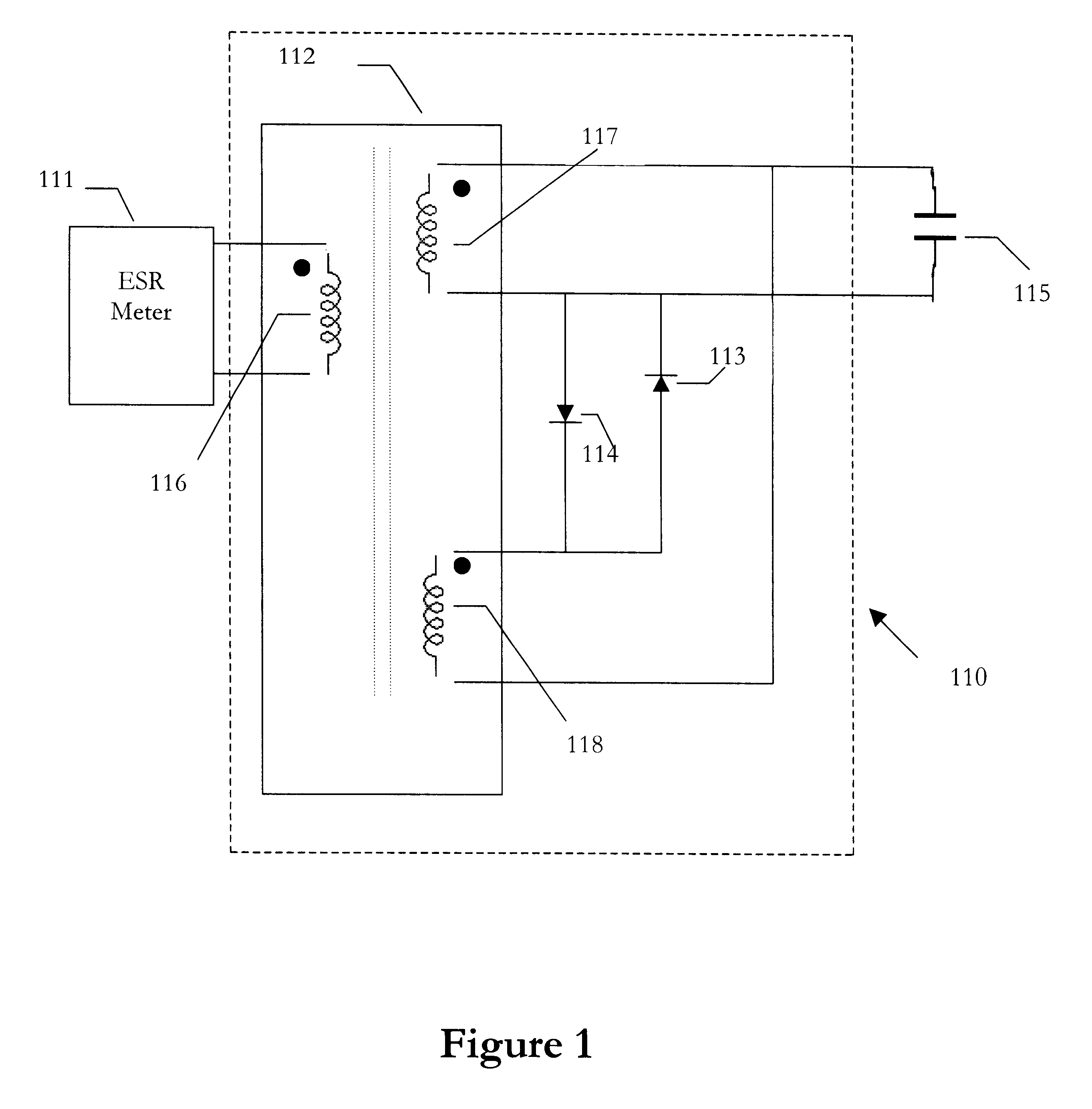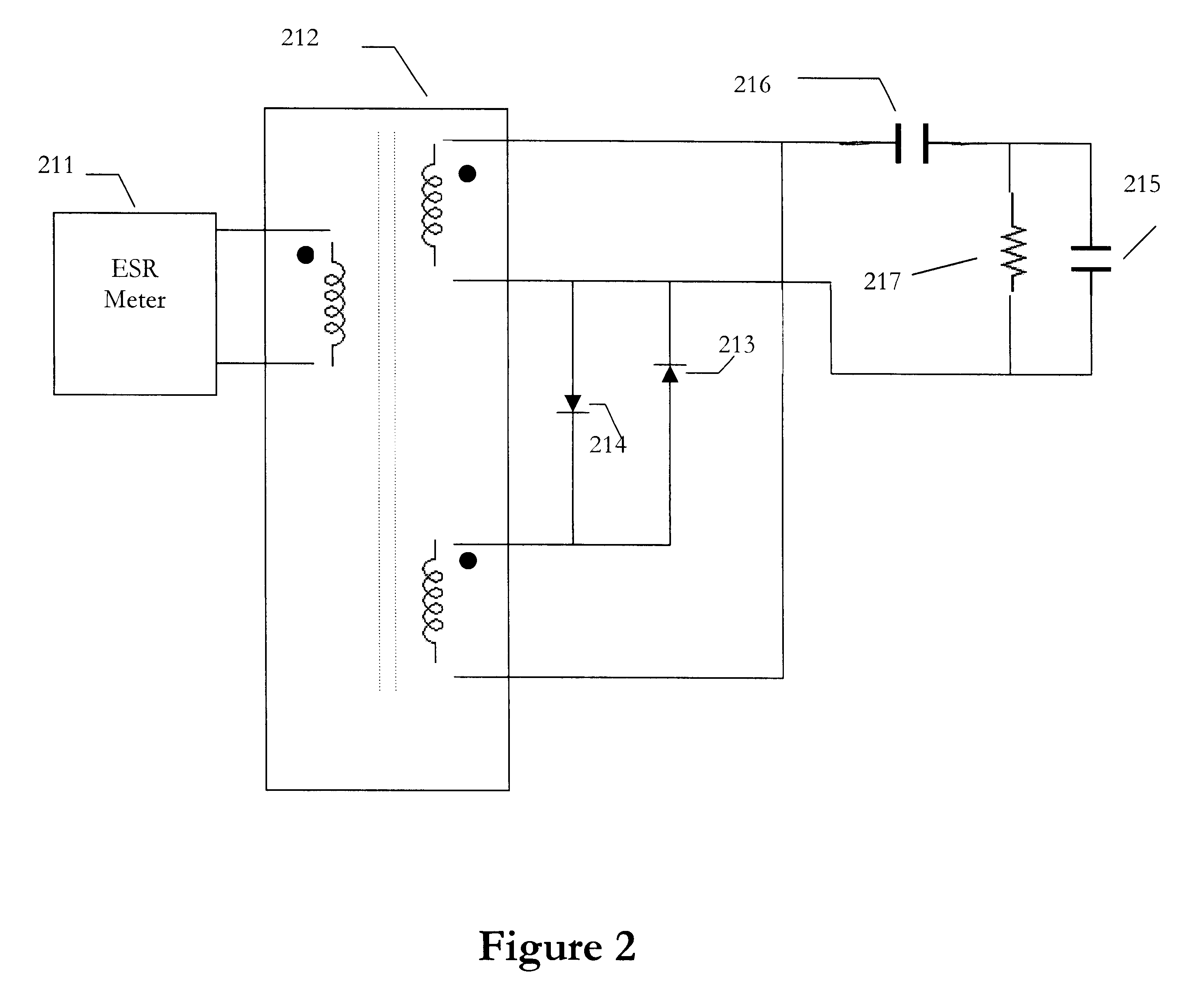System for protecting electronic test equipment from charged capacitors
a technology for electronic test equipment and capacitors, applied in capacitor testing, emergency protective arrangements for limiting excess voltage/current, instruments, etc., can solve problems such as problems such as the test of capacitors, the damage of other components or the capacitor itself, and the difficulty of testing capacitors
- Summary
- Abstract
- Description
- Claims
- Application Information
AI Technical Summary
Benefits of technology
Problems solved by technology
Method used
Image
Examples
Embodiment Construction
Referring to FIG. 2, there is shown a schematic circuit diagram of an instrument that is connected between an ESR meter 211 and a capacitor being tested 215. The low-level current pulses or ac signals generated by the ESR meter 211 are passed through transformer 212 and blocking capacitor 216 to the capacitor being tested 215.
Since these test signals are low-level, diodes 213 and 214 are not conducting. If the capacitor being tested 215 is holding a charge, then part of that charge is transferred to blocking capacitor 216. This discharge of the capacitor results in a current that causes one of the diodes 213 or 214 to conduct for a period of time determined by the value of the blocking capacitor, the dc resistance of the transformer windings, the leakage inductance of transformer windings and other circuit values. Which diode conducts depends upon the polarity of the charge on the capacitor being tested 215. The secondary windings of transformer 212 are thus connected to each other ...
PUM
 Login to View More
Login to View More Abstract
Description
Claims
Application Information
 Login to View More
Login to View More - R&D
- Intellectual Property
- Life Sciences
- Materials
- Tech Scout
- Unparalleled Data Quality
- Higher Quality Content
- 60% Fewer Hallucinations
Browse by: Latest US Patents, China's latest patents, Technical Efficacy Thesaurus, Application Domain, Technology Topic, Popular Technical Reports.
© 2025 PatSnap. All rights reserved.Legal|Privacy policy|Modern Slavery Act Transparency Statement|Sitemap|About US| Contact US: help@patsnap.com



